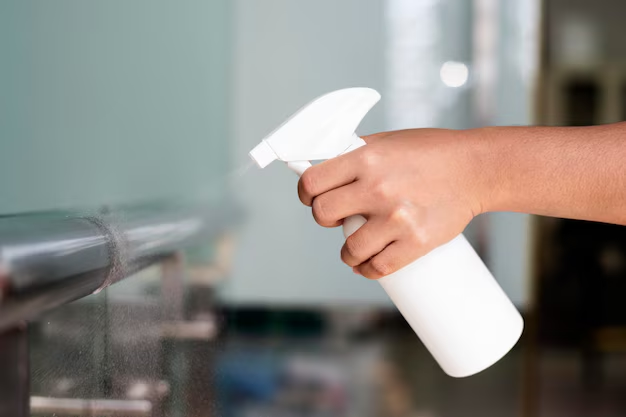Discover the Best Way to Eliminate Mold from Your Refrigerator Door
Mold invading your refrigerator is not just unsightly; it can also pose health risks and affect the freshness of your stored food. Finding mold on the refrigerator door can be particularly frustrating, but the process of removing it doesn't have to be daunting. Let's delve into how you can effectively clean your refrigerator door and maintain a mold-free environment while keeping your kitchen safe and healthy.
Why Mold Appears on Refrigerator Doors
Understanding the Causes
Mold thrives in areas of moisture and organic material. The combination of food spills and condensation can create the perfect setting for mold to flourish on your refrigerator door. This can happen due to:
- Leaky Fridge Seals: When seals are compromised, warm air can enter, causing condensation.
- Improper Cleaning Habits: Food residue and spills might be overlooked, providing nutrients for mold growth.
- High Humidity Levels: Moist environments promote mold, especially in warmer climates.
Common Types of Mold Found in Refrigerators
While several types of mold can grow in refrigerators, black mold, and white mold are the most common. Black mold is often associated with more serious health risks, so it's essential to address it promptly.
Steps to Safely Remove Mold from Your Refrigerator Door
Essential Tools and Ingredients You'll Need
Before tackling any cleaning task, it's crucial to gather the right tools:
- Protective Gloves and Mask: To ensure safety from inhaling spores and skin contact.
- Soft Cloths or Microfiber Towels: For wiping the door surface.
- Scrub Brush or Toothbrush: Ideal for cleaning grooves and seals.
- Natural Cleaners: Such as white vinegar and baking soda.
- Commercial Mold Removal Products: If necessary, but ensure they’re food-safe.
Step-by-Step Cleaning Process
Unplug and Empty the Refrigerator: Start by ensuring the refrigerator is unplugged and its contents are removed. This helps in safe cleaning and better visibility.
Initial Dust and Debris Removal: Use a dry cloth to remove loose debris from the door surface and the gasket area.
Apply the Cleaning Solution: Mix equal parts of water and white vinegar in a spray bottle. Vinegar is a natural mold killer, safe for use around food. Spray the solution generously on the moldy areas.
Scrub the Mold: Use a scrub brush or toothbrush to work the solution into the mold. Pay extra attention to door seals and hinges.
Rinse and Dry: Wipe down the door with a damp cloth to remove any vinegar residue, then pat dry with a clean towel to prevent moisture build-up.
Dispose of Sponges and Cloths Properly: To prevent cross-contamination, dispose of or thoroughly wash any sponges or cloths used during cleaning.
Plug in and Restock the Refrigerator: Once all cleaned and dried, you can reassemble the appliances and replug them into the power source.
Best Practices for Mold Prevention
Keeping Your Refrigerator Mold-Free
- Regular Cleaning Schedule: Wipe down your refrigerator's interior and door at least once a month.
- Check the Seals Regularly: Ensure that seals are intact and replace them as needed to keep moisture out.
- Use Baking Soda: A small cup in the fridge can help absorb odors and maintain dryness.
- Control the Humidity: Use dehumidifiers if you live in a very humid area to reduce moisture around the kitchen.
Healthy Habits in the Kitchen
- Promptly Clean Spills: Remove any food spills immediately to prevent the mold from gaining a foothold.
- Inspect Food Regularly: Check for expired or spoiling foods that can contribute to mold growth inside your refrigerator.
Consumer Tips and Key Takeaways
Quick tips to enhance your cleaning efforts:
- 🧴 Safety First: Always use gloves and masks when cleaning mold to protect yourself from spores.
- 🥒 Check Foods: Foods that might release moisture or spoil quickly should be used first to avoid contamination.
- 🔍 Monitor Regularly: Look at your refrigerator seals for any signs of damage or mold weekly.
The Importance of Regular Maintenance
Maintaining a clean refrigerator is crucial not just for aesthetics but for safe home care. Consistent cleaning not only prevents mold growth but prolongs the life of your appliance. Cleanliness is key to ensuring your kitchen stays safe and your food fresh.
Efficient Maintenance Strategies
- Make Cleaning Collaborative: Engaging all household members to care for the fridge ensures mold and moisture are caught early.
- Schedule Quarterly Deep Cleans: Besides the monthly wipe down, a more thorough cleaning of all compartments every few months helps keep mold at bay.
Final Thoughts
Removing mold from your refrigerator door may seem like a challenge, but with the proper tools and techniques, it can be manageable and straightforward. By understanding how mold develops and taking preventative measures, you can keep your refrigerator mold-free, ensure the safety of your food, and contribute to a healthier kitchen environment. Adopt these practices into your cleaning routine, and you'll enjoy a fresher, cleaner refrigerator for years to come!
